A Special Conjecture “Unbreakable Encryption”: John Nash's Letter to the NSA
In 1955 John Nash wrote a special letter to the NSA. At the he was merely in his 20's but had already put out 2 revolutionary papers on game theory establishing what is know as the Nash Equilibrium”, and a solution for the value of money in trade called “The Bargaining Problem”. At this time in his life Nash was already considered a “mathematical genius” and at this time viewed as being quite “sane”, whereas most people know him from his Hollywood biography/drama A Beautiful Mind starring Russel Crowe, and that over the next few years he would appear to fall quickly and deeply into a state of psychosis.
Of all of the material by Nash that I have read, this letter that was later released to the public by the NSA, is the most revealing in regard to the way that Nash thinks and solves problems.
I'm not capable of fully understanding the intricate mathematical and cryptographic solutions that Nash's puts forth in this writing, nor the design of the machine that he gives, however, with a careful examination of the points that he makes, and his style of presenting them, we can still gain interesting insight into how this man's life and works unfolded, starting from when he was just a young man.
Let us examine a few lines from the scrawling manner Nash used to communicate his ideas to the worlds leading intelligence and research agencies.
Dear Major Grosjean
Firstly we can note right away, and throughout the pages here, that it appears Nash took little time to formalize his thoughts. It almost seems like he literally had this insight and immediately began to write it down. Throughout his writing here he strikes out words and add words later with little arrows. The reader can almost feel the sense of urgency and excitement in both the discovery and the excitement of communicating it.
Nash lets the Major know he has sent the description of a machine to another agency, which in my opinion is somewhat peculiar for reasons I will explain at the end of this writing. He also notes that he is sending the letter in handwriting, which although computers and the internet were essentially not around at this time, still seems to speak to some form of security. He sent the machine to the Navy as well, and most noteworthy in this paragraph is where Nash finishes with “I think”. An awkward and halfhearted way of confirming the truth of what will be understood to be the presentation of a very powerful conjecture.
I'm Not Just a Circle Squarer
A circle squarer refers to someone that is trying to solve an unsolvable problem, and this is where this correspondence starts to get interesting. At the time it might not have been understood that Nash was a genius (see this declaration on his letter of recommendation on pg. 5 here, but if we can assume the truth of such a claim we should really note that Nash is admittedly affirming that he is presenting an unbelievable truth. He wants the reader to consider the validity of an otherwise unpalatable claim.
Dear Sirs
I'm not exactly clear on which agencies or people specifically each of these letters are addressed to, but it doesn't matter for the purpose of highlighting the significance of the content. Here Nash reiterates his point about sending his design to the RAND corporation. He closes this paragraph with an important line, the principle he describes is important to him and that he has reason to believe the people he is reaching out to don't know the truth or significant of it, although he doesn't directly say how or why he would know this.
A General Conjecture
The basic idea is in the last line:
...the mean key computation length increases exponentially with the length of the key....
We can also note here how scrawly and disorganized the presentation of his writing actually is, although his line of thought is actually quite direct and coherent.
The Significance of This General Conjecture
It's always fun when a genius states the significance of something (assuming its truth) is “easy to see”. In math, we sometime assume the validity of something and can work out certain solutions without ever proving the assumption. This is an approach that, in a non-mathematical implementation, can also useful, but doesn't always sit right with people. It's the beginning of where Nash's ability to solve problems from odd angles comes into play. He states it here:
...it is quite feasible to design ciphers that are effectively unbreakable.
The keywords here are “feasible” and “effectively”.
He then goes on to explain a world he foresees in which decryption will be ineffective in relation to the evolution of ciphers. This is the beginning of his realization and the world that his mind started to paint upon his discovery of this insight.
A Valuable Conjecture With No Expectation of Being Proven
Things get interesting here. Nash admits he can't prove it, and doesn't expect it CAN even be proved, yet he is adamant that it is still very significant. This is another realization or specification that wouldn't sit well with the average reader. He also basically explains that as time goes by we will begin to understand the validity of it.
We (the US) Can Not Afford to Not Make Use of It
He continues to gloss over the validity of it, which I think is probably standard among “geniuses”. Having no time to convince people, he wants to go on to the ramifications of such a conjecture actually holding. It's interesting that he writes to the governments and says “we” but also qualifies the pronoun with “(the US)”. It seems there is some paranoia here he is dealing with, or in other words, he wants to make sure the reader knows he is patriotic to his nation. The last line is significant and will come into play at the end of this article, “....we should try to keep track of the progress of foreign nations towards 'unbreakable' types of ciphers. Here Nash is explicate in what he proposes, the existence and evolution towards unbreakable ciphers as well as the implication of them.
This Principle Should be Kept Secret
I think in a way this is where his writing gets fun in a sort of conspiracy type fashion. Nash proclaims an importance in keeping this conjecture secret, which he MUST of felt a rush from, when he came up with it. He also seems to take great caution in trying to convince the reader he has done his duty and due diligence in protecting it from others and especially from “enemies” or “foreign nations”. This is a theme he comes back to at various points in the letter. His use of the word “probably” is also curious as if he is being condescending.
Nash Believes the Machine he Invented Has This “Unbreakable” Property
I have read that, in today's crypto-science, Nash's proposed design is not actually as secure as he states here. I'm still unsure if that is true, or if those that claim this don't fully understand his proposal. Nonetheless it is quite the claim, and at this point it seems clear Nash felt he had a lot on his shoulders with this insight. Furthermore, as I understand his conjecture and its implications, whether his machine's encryption is unbreakable or not is not important, and I kind of suspect Nash would have felt this way as well.
This Conjecture is Suitable For Computers of the Future
This excerpt is very interesting when read in conjunction with this paper called Parallel Control, also written by Nash a year earlier for RAND. It is a design for a system of computers, that for all I can tell, we still haven't reached in our modern day age. The paper and proposal has the same feel as this letter. I feel like people today might suggest that his design is flawed, and that in many ways we have surpassed his insights, yet there is an implication by Nash that in 1955 he foresees technology that is beyond what we even have today. My basic point here is that he is thinking about a crude form of the internet in relation to his unbreakable encryption conjecture. Here, by crude, I mean to point to undeveloped ideas, rather than a lesser evolved version of internet technology.
Please Let Me Know if You Considered My Conjecture
This is where it seems to me Nash is playing with the authorities. He knows, whether his conjecture is seen as significant or not, for obvious security reasons he won't get much of a reply. In informal language he admits he expects and hopes to get confirmation that the content of his letters were considered. This is critical in relation to one of the paragraphs we covered from above:
...we should try to keep track of the progress of foreign nations towards “unbreakable” types of ciphers.
In a sense, this whole letter, and the designs he sent to RAND and the Navy, are really a backhanded way of checking on how informed Nash's government's agencies are on this “unbreakable” conjecture. In a way, it almost seems like he is taunting them and bragging about his knowledge and ability.
Secret Information Conveyed to the “Right People”
Nash closes by affirming the idea that he has been very careful with his insights but that he also realizes that he needs to express them to his own government. The response to his general sentiments I think is what is most interesting and ties the whole communication together.
Dear Mr. Nash 'Where is This Machine?'
I'm not exactly sure the truth of this, but at least as a conspiracy theory it is interesting to note that the receivers of Nash's letters were somewhat forced to reply and reveal their interest since they couldn't seem to find the designs he said he sent to the other agencies. We know this result is favorable to Nash because he stated “it would be nice to have some sort of answer.”
Dear Mr. Nash: 'Your System, Although Admittedly Ingenious, Isn't Ingenious, We Won't Be Using it, And We Cannot Discuss it'
This is a telling response, and to me puts the whole communication into perspective. I'm not entirely sure Nash meant to do anything more than to stoke a fire with his government. I think it would be foolish to assume that the receivers of these letters simply tossed his ideas aside, but what we can probably agree to is that if the conjecture Nash proposed was as significant as he seemed to think, he would have received a reply identical to this one.
Conclusion
I have my own thoughts on the implications of Nash's insights, but they are very related to many other papers and insights that Nash had at this time, and so it is very difficult to explain in a succinct manner, especially to those not very familiar with Nash's works. In other papers Nash showed all finite games have a solution, the value of money in trade, a design for an AI computer system, and this conjecture that eventually the encryptor outpaces the decryptor. It was shortly after these insights that Nash apparently had a mental breakdown. He subsequently fled to Europe where he says he was trying to exchange his US dollars for the Swiss currency which he believed was of a stronger value. He was going around saying he was going to free the people from the colluding governments and that the anticommunist and communist governments were on the same side. It was at this time he came up with the basic concept for what he dubbed “Ideal Money” which is the levation of a standard of money that no governments or group of people can control. In the Hollywood story of him, it is correctly portrayed that Nash fought for his freedom from asylum, yet his true life biography shows that he never actually fully admits he was insane and that he never actually used medication to bring his mind back into order. It is said that after this time Nash spent many years as the “Phantom of Fine Hall” scribbling on chalk boards all through the night at Princeton university, and in the last 20 or so years of his life he spent about how the advent of an electronic currency with a stably issued supply will asymptotically take the power out of the hands of central banks and authorities to arbitrarily control the money supplies and their respective values.
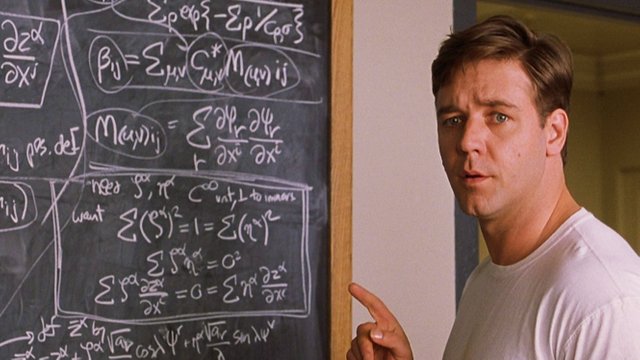


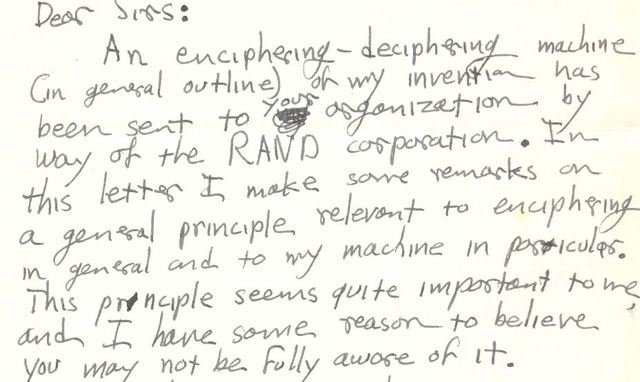
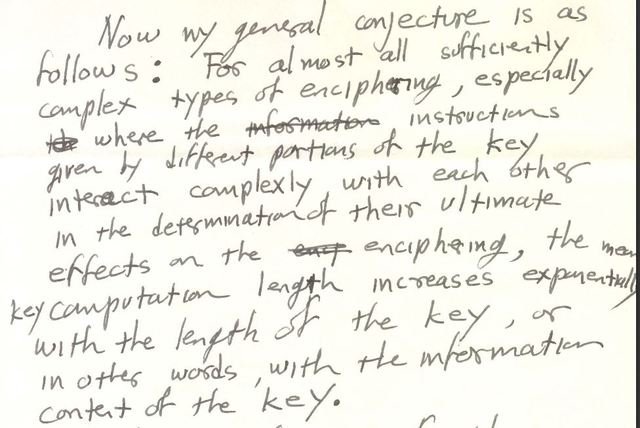
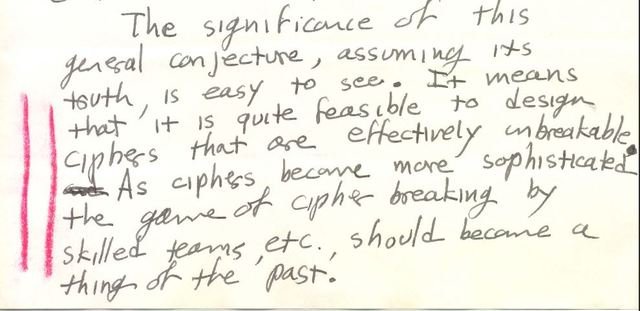
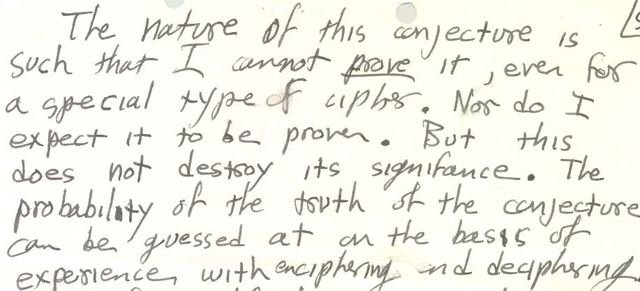
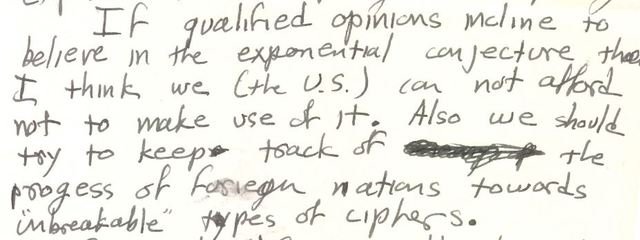




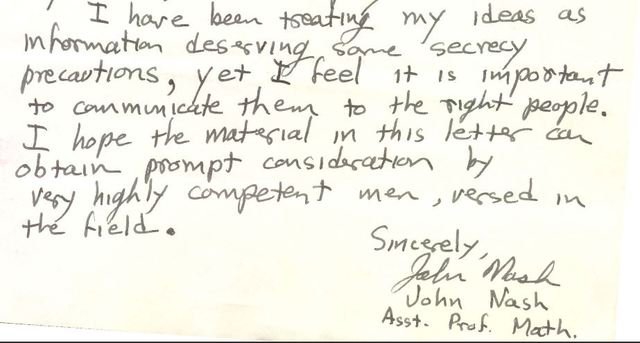
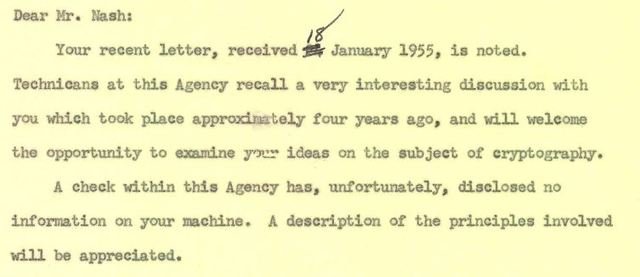
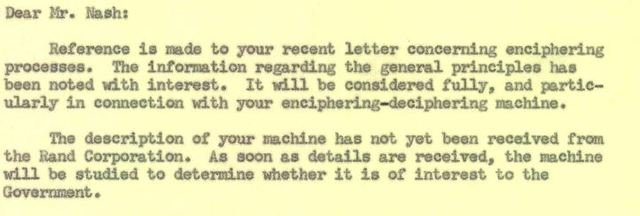
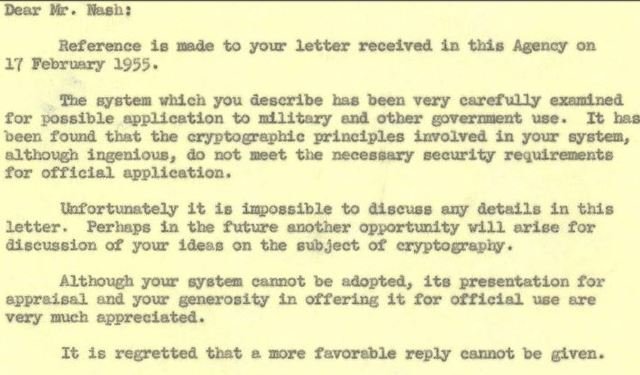
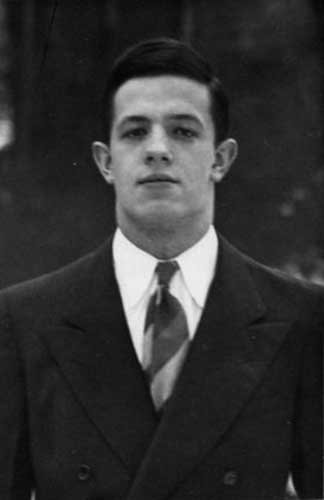
That was an awesome informative read.
I can relate with Nash on the OPSEC paranoia. Solid OPSEC is something you can never really unsee and is impossible to get out of your mind once it gets in.
Had to look that up "OPSEC" thx, gonna meditate on it, cheers!
I love this story. I love that Nash was so ahead of his time (computational complexity theory and modern cryptography were still decades away). I love that the NSA turned him away (or did they?). I love that he really does come across as "some crank," but today we know he was one of the great thinkers of the 20th century.
:) cheers!
I have no doubt the NSA felt it was "ingenious" and fully intended to implement something like it. They just never wanted it released the entire world to use as they saw fit...or to create independent financial systems either. Thank you Satoshi Nakamoto :)
I don't know that he was Satoshi, and I suspect Satoshi was a group and Szabo was certainly involved. But I can say that Nash foresaw bitcoin, or in other words the advent of a digital gold, and he spent years philosophizing the implication of it in relation to our global financial system. Ideal Money is many many years ahead of its time, and I expect it to become very relevant soon. Thanks!
Excellent read. I think Satoshi doesn't need to be affiliated with anyone really. Reason? He assembled publicly available knowledge from systems that pre-existed. He just refined and merged the designs (public designs).
I agree to an extent although there are also ramifications depending on who was involved. Besides that I think some people miss that really bitcoin is just an experiment that is set for blind peer review like any other properly done presentation of a theory. Its just that the nature of the conjecture is such that the experiment could not be done in a lab (otherwise people would just say, "sure it works in the lab, but governments will just shut it down in real life".
the described method appears to be very similar to an XOR pad, which is known to be the most secure form of encryption. The problem is that it requires exchanging keys via means that also need to be secured, and likely the key exchange mechanism is the weakest link.
however if you have a physical device with a large number of high entropy bits, make two copies of this, then it can be used for highly secure communications of up to the length of the high entropy bits. I am pretty sure this is exactly what is used in the highest security areas
Thanks so much for even that! How would it feel if this came to you in a flash in 1955 when you were in your early 20's?
Also if I do know you from another forum, I know you to be sincere and knowledgeable on the subject of crypto-graphy and the related content. I would ask you if you are saying that even though Nash thought his design to be unbreakable, would you argue with such a mind that he is wrong? Perhaps our science out grow his understanding from back then so its not so much for you to suggest he was wrong, but we can take this a little further: Even if he KNEW his design WAS breakable, does the way he went about these letters not still allow the suggestion of such a design serve its purpose?
In other words he wasn't excited because his design was unbreakable, he was excited because of the implications of the realization that eventually encryption becomes EFFECTIVELY unbreakable. So regardless I think his excitement is both warranted, and not well understood even today.
Like he writes it is only breakable via bruteforcing 2^N combinations, which at big N is not practical
but his ambivalence was that he couldnt prove that it cant be found, as indeed it is possible to simply guess the right private key on the first try! Of course, many billions of years can go by without finding it either.
https://en.wikipedia.org/wiki/One-time_pad
Ah right, you explain that well to me thx!
You're first 3 pages describing Nash are awesome. Thanks for great images and your comments. I've read about him (in books) but your article is much more succinct, relevant and approachable. Insanity in a small degree may be the price of published genius, and he knew and admitted this. Once a girl thought I was like Nash and invited me to watch the movie. I thought it was just a date, but years later I realize she saw this side of me. Very nice overview, thank you.
Thx. There is a documentary I think I linked to called "A brilliant madness" which shows the real story. He basically explains he had wild ideas and he had to realize that he was presenting them in an illogical fashion. He never really explicitly says he was crazy. I'll have some other articles like this about his insights. But ya nice to know it resonates, I've understood all this but had difficulty breaking it up to be presentable to those that would be interested but might not take the time to really see what his writing and insights were about. Cheers!
Thx for the hint. "A Brilliant Madness" is very interesting.
Youtube link:
The end 54 mins ;p check it out.
You did a great job. You show how intelligently he writes. To sit down and write such a well-written letter off-the-cuff takes a very creative mind. He must have had an amazing wife to balance his unique approach. My mind works uniquely too, and I don't consider myself to be wacky, so I get what you're saying.
I've written alot about my version of "ideal money", and I have a little bit in common with Nash's ideas, such as having studied Halal or Islaam ideals on money a bit. He also seems to advocate a steady creation of coins or something like that, or maybe it's more like what I advocate, which is money creation based on demand, to keep price level.
Just saw this, gimme a bit to get to it and digest it thx.
That letter describes perfectly Nash personality. Here is a quote from when he Einsten:
He unfortunately didn't research cryptography to confront his ideas. First of all he would have follow the Kerckhoffs's principle. He would have base himself on information theory proposed in 1948. He could have put "numbers" on his conjecture et build a very secure practical machine. Too bad such a genius didn't have such mindset. I like that guy.